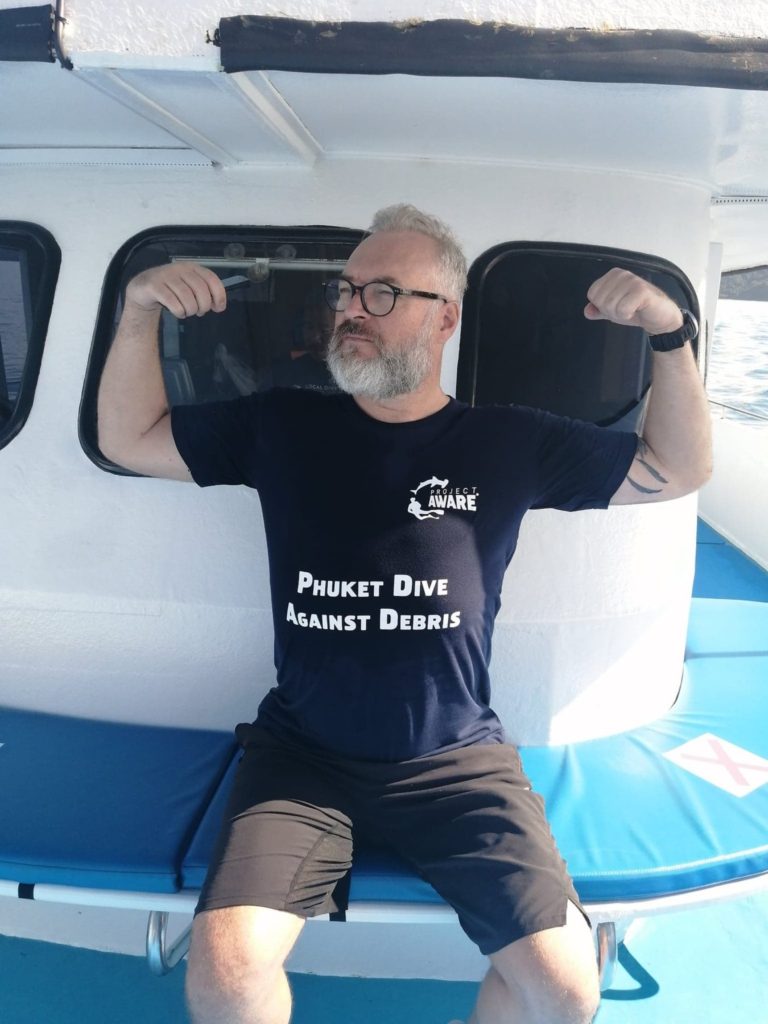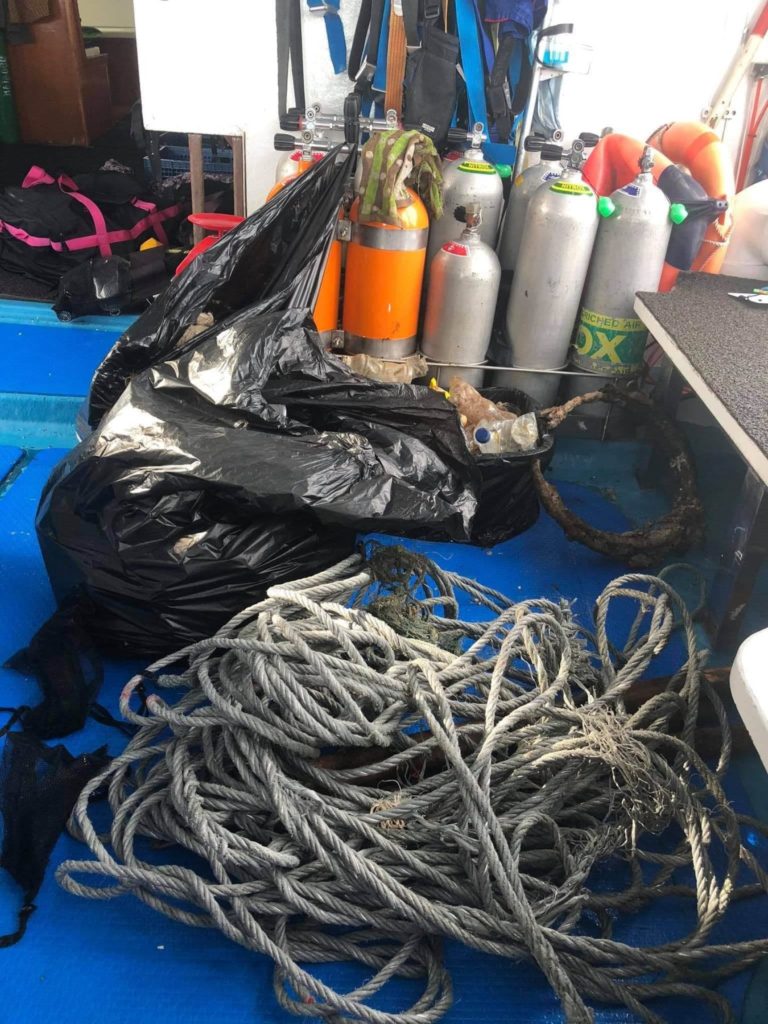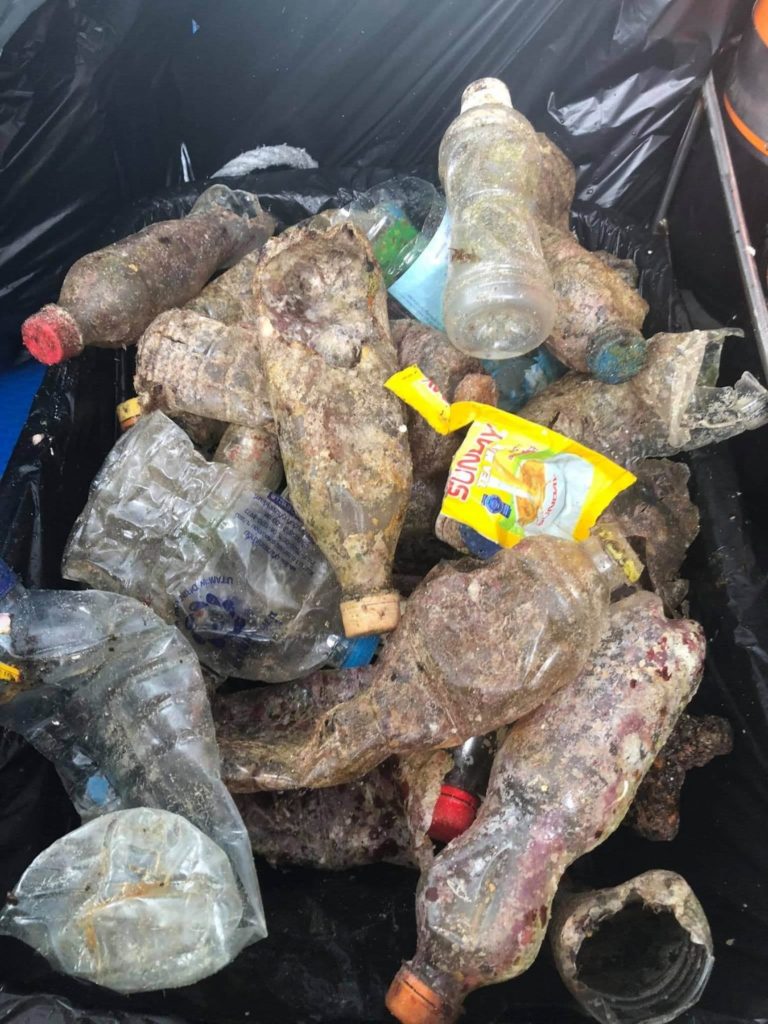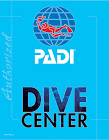Guest Blog by Instructor, Eamonn Pickett
On September 26th we took a group out from Andy’s Scuba Diving in collaboration with Local Dive Thailand to do a Dive Against Debris at our beloved Racha Islands, just south of Phuket.
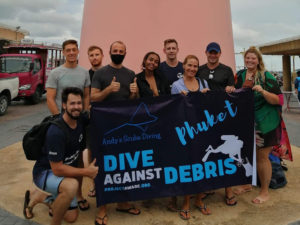 Our previous Dives Against Debris, at the Racha Islands, had been a success, from the perspective that we found very little debris. In our previous blog posts on the subject, our Divemaster Spencer had theorized this was because of lack of tourism. Previous experience had told us that the majority of the debris we would find here would be fishing gear, with some plastic bottles sprinkled in. Nevertheless we got a great group of divers together with a diverse range of experience levels and hopped in at Rahca Noi’s Banana Bay focused on keeping our local divesites in top shape.
Our previous Dives Against Debris, at the Racha Islands, had been a success, from the perspective that we found very little debris. In our previous blog posts on the subject, our Divemaster Spencer had theorized this was because of lack of tourism. Previous experience had told us that the majority of the debris we would find here would be fishing gear, with some plastic bottles sprinkled in. Nevertheless we got a great group of divers together with a diverse range of experience levels and hopped in at Rahca Noi’s Banana Bay focused on keeping our local divesites in top shape.
Why does it matter?
We should all be aware, that this point plastic waste in our oceans is a major problem. Because these plastics take so long to degrade, they end up making their way into the food chain and can cause irreparable harm to marine animals and other animals that interact with the marine food chain, including humans. A recent study from the University of Queensland found microplastics in 100% of the seafood that they had inspected. This included fish, prawns, oysters and crabs. We had hoped that we would find very little plastic, similar to our previous dive cleanup efforts, however this time was different.
A Change in the Pattern
I gave the briefing keeping in mind our past experiences at this divesite. Keep good buoyancy, while cleaning up, don’t remove debris if it is minimally harmful to marine life or if it has already has marine life growing on it or laid eggs on it.
Setting up the equipment prior to the dive, I must admit that I felt silly, giving each dive team 2 bags. I thought back to our previous Dives Against Debris and thought we would not fill all of these bags and would look pretty silly if we came up with a bunch of empty bags.
Boy was I wrong. At just one divesite, within 30 minutes, everyone in the group, that’s 9 divers, with at least one bag each, had filled their bags with debris. 2 of the divers, myself included, had bags that were quite large, and once they were filled it looked like we were diving around with body pillows attached to our BCDs.
No Tourists, but Plenty of Debris
Previously we had come to the conclusion that the reason we had not found a lot of plastic consumer waste, was because there had been a lack of tourists in the area. This is still the case. Although, Phuket has been COVID-19 free for some time now, that does not mean that international tourism has returned. There has been a small influx of domestic tourism, but realistically it has not been in high enough volumes to be noticeable.
However, this does not account for the difference between finding 64 plastic bottles at 3 divesites at our previous Dive Against Debris, and finding a whopping 152 bottles at one divesite on the 26th!
My Takeaway
Along with the alarmingly high numbers of plastic bottles removed, we also removed fishing nets, fishing lines with weights and hooks attached, 2 sandals (no they did not match), some pieces of cloth, along with various plastic fragments. My big takeaway from this dive is that tourism is not solely responsible for the marine debris in our area. As a community, we need to look at reducing our plastic consumption and be more active in our efforts to educate people here on the island. As I sifted through the 2 large garbage bags full of debris, categorizing and recording, I couldn’t help but think that if I had brought this to a hotel or restaurant around our beautiful island that people would be appalled by what is finding its way into our picturesque oceans here in southern Thailand.
I hope everyone is staying safe and healthy around the world. Remember that every little bit counts when it comes to battling plastic waste, whether it is in the ocean or on the street. Support your local diveshop and have a wonderful week!



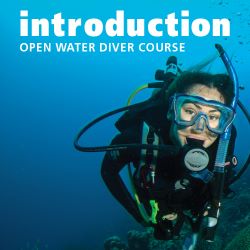 PADI Introduction to Open Water Diver eLearning is sample of the PADI Open Water Diver eLearning product that allows potential new divers a chance to interact with the PADI Open Water eLearning material prior to purchasing the course.
PADI Introduction to Open Water Diver eLearning is sample of the PADI Open Water Diver eLearning product that allows potential new divers a chance to interact with the PADI Open Water eLearning material prior to purchasing the course.

